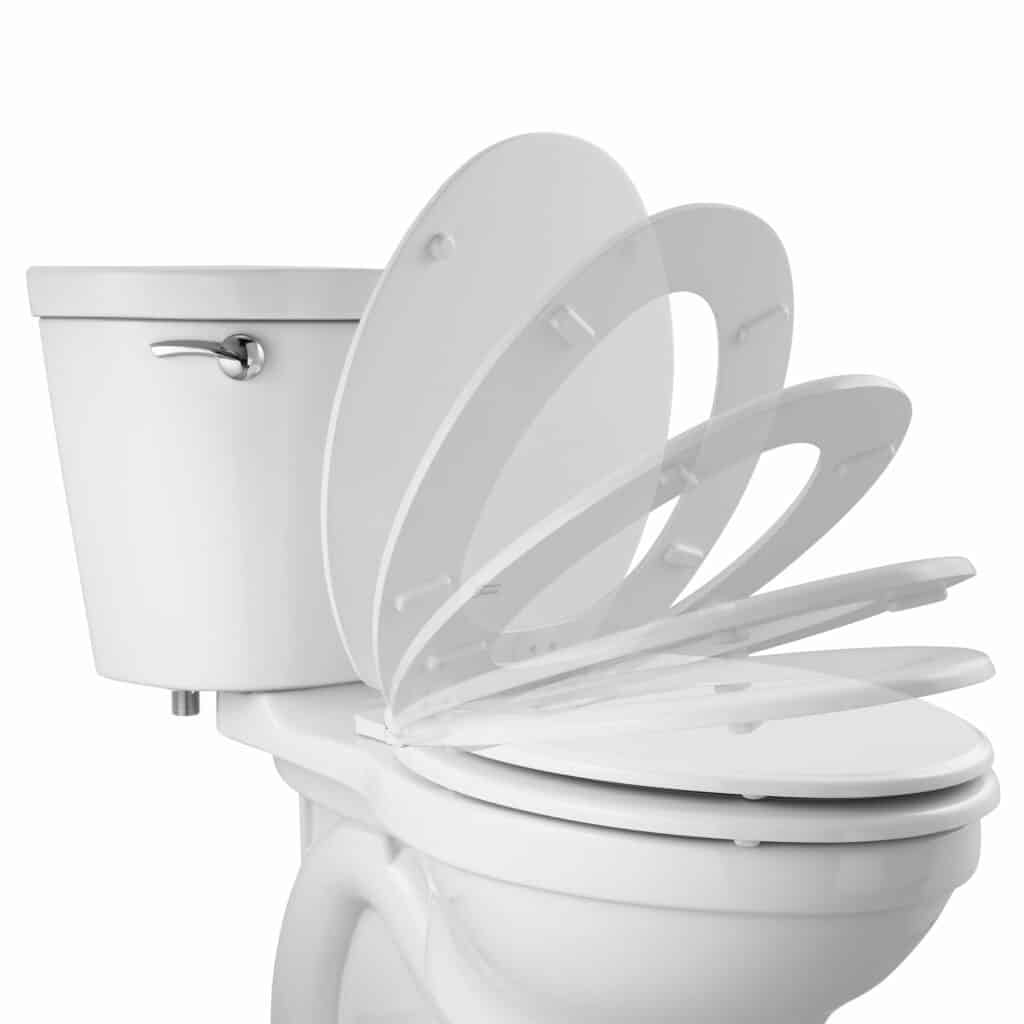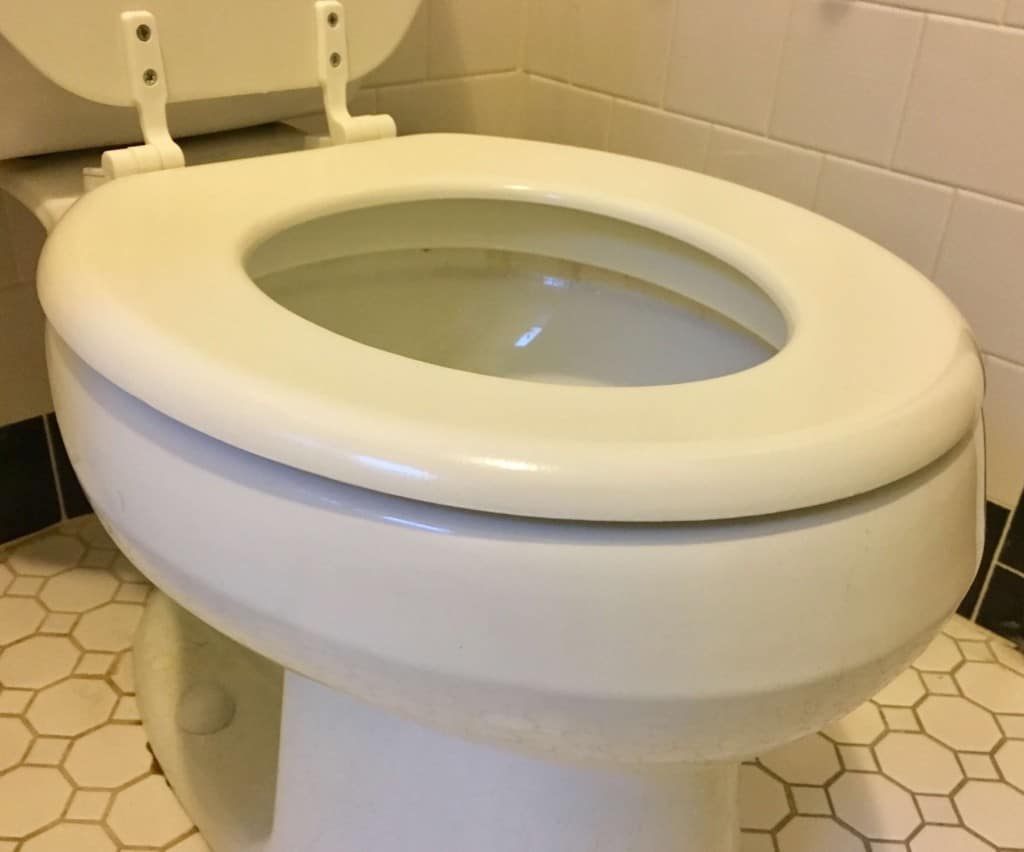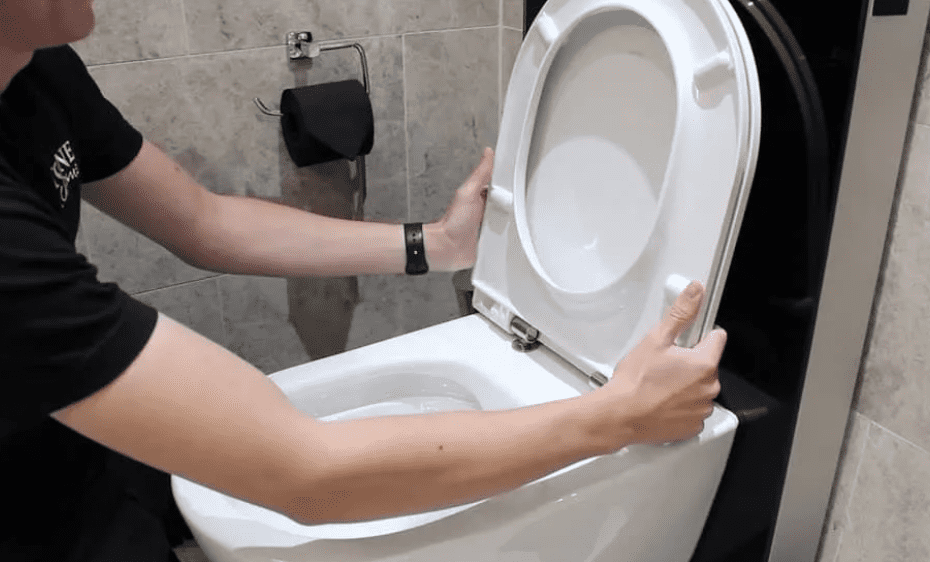My soft-close toilet seat stopped working; please, how do I fix it? That’s the question almost every owner of toilets with soft-close mechanisms asks at one point or another during the equipment’s lifetime.
The invention of the soft-closing toilet has proven revolutionary. It is quieter than the conventional toilet seat, making things cleaner and safer, especially in environments where small children are present. If your soft-close feature has stopped working and you haven’t got a clue how to troubleshoot and fix the bloody thing, then you are in the right place. Here we take a look at soft-close toilet seats, how they work, some common problems that may interfere with their functioning, and how to fix them.
Table of Contents
What is a soft-close toilet seat?

In essence, a soft-close toilet seat collapses entirely on its own once you start to press it down. But it does so softly, with the help of gravity and special hinges. Indeed, just a gentle tap can trigger the seat to begin closing. The lid or seat will eventually rest on the bowl.
Advantages of soft-close toilet seats
There are several advantages to installing a toilet with a cushioned closure mechanism. Here’s a look:
Stop the slamming now!
Naturally, the main benefit of a gently closing toilet seat is that you’ll never again experience a slamming sound when it closes, as long as all of its parts are in good working order.
Adults or kids who are not keen enough can release the seat without it slamming atop the toilet bowl with a startling sound. This is advantageous, especially when using the toilet at night or when you have a baby sleeping in the nearby rooms and don’t want them disturbed.
Safer for kids
A toilet seat with a cushioned closure mechanism is safer, especially for young children with tiny fingers and hands that might otherwise get injured by traditional toilet seats that tend to slam down hard and fast when not held properly. It’s also safer for pets, keeping them from drinking from the bowl and getting all kinds of stomach upsets.
Cleaner
Slow-closing toilet seats are also more hygienic. This is because closing the seat requires a little less contact and manipulation. Most soft-close toilet seats comprise bacteria-resistant vinyl or plastic. Compared to traditional toilet seats, they are less likely to develop mold or mildew and thus keep maintenance work to a minimum.
Moreover, most soft-close toilet seat designs feature removable hinges, making it easier to remove the lid and clean the region surrounding the seat hinges without wrestling with parts. You can give your toilet seat a blitz and easily remove dirt and grime.
Helps keep the toilet lid closed.
Do you keep quarreling with your family about leaving the toilet lid up? That can cause strife in your relationship. But with a soft-close toilet seat, statistics show that such problems are minimal. Indeed, people are less likely to leave the toilet lid up when using a toilet with a soft closure mechanism than a traditional one.
Perhaps it’s because it’s much easier and far more convenient, or maybe because it’s a cool concept. Either way, it gets people in the habit of closing the toilet lid after use, keeping germs where they belong, and reducing quarrels in the home.
Simple installation
When shopping for a new toilet, you’ll discover that most now feature a cushioned closure mechanism. Even for inexperienced DIYers, installing a soft-close seat is straightforward and quick. With just a screwdriver and help from the instruction manual or YouTube video guides, you can take on the task.
These toilet seats are a plus in any bathroom since they offer a relaxing alternative to regular toilet use. Plus, as already mentioned, they require less maintenance.
Soft-close toilet seat problems

However, parts might get dirty, fail, deteriorate, or even break, as is often the case with everything mechanical that is put to frequent use.
Common issues with soft-close toilet seats include:
- Loose hinges allow the seat to move from side to side with ease.
- Worn-out hinges such that the seat slams down hard.
- Burst hinge cylinders leaking grease or fluid
- cracks in the seats from excessive pressure
- Stubborn stains on surfaces and unpleasant odors coming from the seat
Your premium soft-closing seat could occasionally stop working or require maintenance. Here’s a look at why do soft-close toilet seats stop working and some useful remedies.
Why do soft-close toilet seats stop working?
A soft-close toilet seat may malfunction for a variety of reasons. This equipment features a seat, lid, hinges, and hinge dampers that aid in regulating how quickly the seat closes. A problem could arise from any of the aforementioned parts. Here’s a look:
Check to see if the seat is aligned.
While some toilet seat hinges are fixed, others are adjustable. You can take steps to correct a toilet seat that’s out of alignment due to frequent movement.
- Remove the caps to expose the hinge screws.
- Take out the screws to readjust the seat and hinges as needed.
- Put everything together as you found it, and press the hinge pins all the way in.
- Slowly close the lid and seat while making sure they are aligned atop the bowl.
Check to see if the toilet seat hinge mechanism is loose.
A creaking or slamming toilet seat can be the result of a loose toilet seat hinge mechanism. Use these tips to tighten your toilet seat hinges.
Close the lid and take out the screw caps; these are the little white caps on top of the screws.
- Find the nuts that are holding the screws in position.
- Hold them firmly with pliers as you tighten the screws with a screwdriver.
- Wiggle the toilet seat to see if it’s stable and not squeaking, then put the screw caps back.
- For added measure, lubricate the toilet seat’s back hinges using silicone spray.
Check to see if the dampers need tightening.
Soft-close toilet seats feature hinge dampers; these regulate how fast the toilet seat and lid drop. If your soft-closing toilet seat is smashing down hard, these dampers may need tinkering. Most of the time, all you have to do is close and unscrew the toilet lid, find the hinge screws, and adjust them tight.
Check to see if the dampers need grease or replacement.
As already mentioned, the hinges on soft-closing toilet seats are typically plastic cylinders filled with viscous silicone or thick, waterproof grease to create resistance.
These cylinders, also known as rotary dampers, often malfunction, and leak grease. When this happens, the toilet seat will no longer function normally.
This tends to happen if you often force the toilet seat or lid down quickly. Soft-closing toilet seat hinges aren’t made to handle a lot of pressure when you force them down quickly. The excessive pressure often stretches the dampers to their maximum limit, causing them to burst.
The signs of a burst cylinder include
- A damaged cylinder causes the seat to crash down harder or more abruptly than it should.
- Fluid leakages cause the lid or seat to keep sliding in either direction because of reduced resistance between the hinges and the seat itself.
You can verify if the cylinders are broken or simply need fresh grease by removing the toilet seat and lid and taking them apart to check. Simply remove the seat and lid, get a screwdriver, rotate the cylinders to release the lock, and separate the two (seat and lid). Next, take out the cylinders and check for fluid leaks or signs of breakage.
The left hinge controls the seat, while the right hinge controls the lid. So if the seat is the problem, the left hinge is probably broken or needs grease, and vice versa. Of course, the solution is simple if the dampers simply need grease. Just open them, repack them with grease, and then put everything back as it was before. In general, this will work if the dampers are simply lacking grease. However, if you see signs of a grease leak, then your cylinders are burst, and you’ll have to swap them out for new ones.
Check for dirt or grime.
In other instances, a soft-close toilet seat that slams down fast and hard only requires cleaning. Particles may become trapped in and around a toilet seat’s hinges, causing all kinds of problems. Giving the seat a blitz can help get rid of the problems.
Take the hinges and seat off, then soak them in warm, soapy water for about 20 minutes. This will assist in breaking up and dissolving any debris impeding efficient operation.
But if you notice a cracked damper, then you should consider replacing the toilet seat hinges. Contact the brand’s manufacturer to see if they have replacement parts. Moreover, the cost of the replacement may be covered by the warranty you received when you bought the toilet seat.
Wrap-up
Installing or repairing a self- or soft-closing toilet seat might be convenient in various ways. These seats feature a cushioned closing mechanism that keeps them from slamming down hard. They are also easy to maintain and clean. But they don’t cost peanuts, so if yours is not working, you should consider troubleshooting the problem before you start worrying about replacement costs. Use the above tips to troubleshoot and fix your slow-close toilet seat hinges and get them back to working condition.
